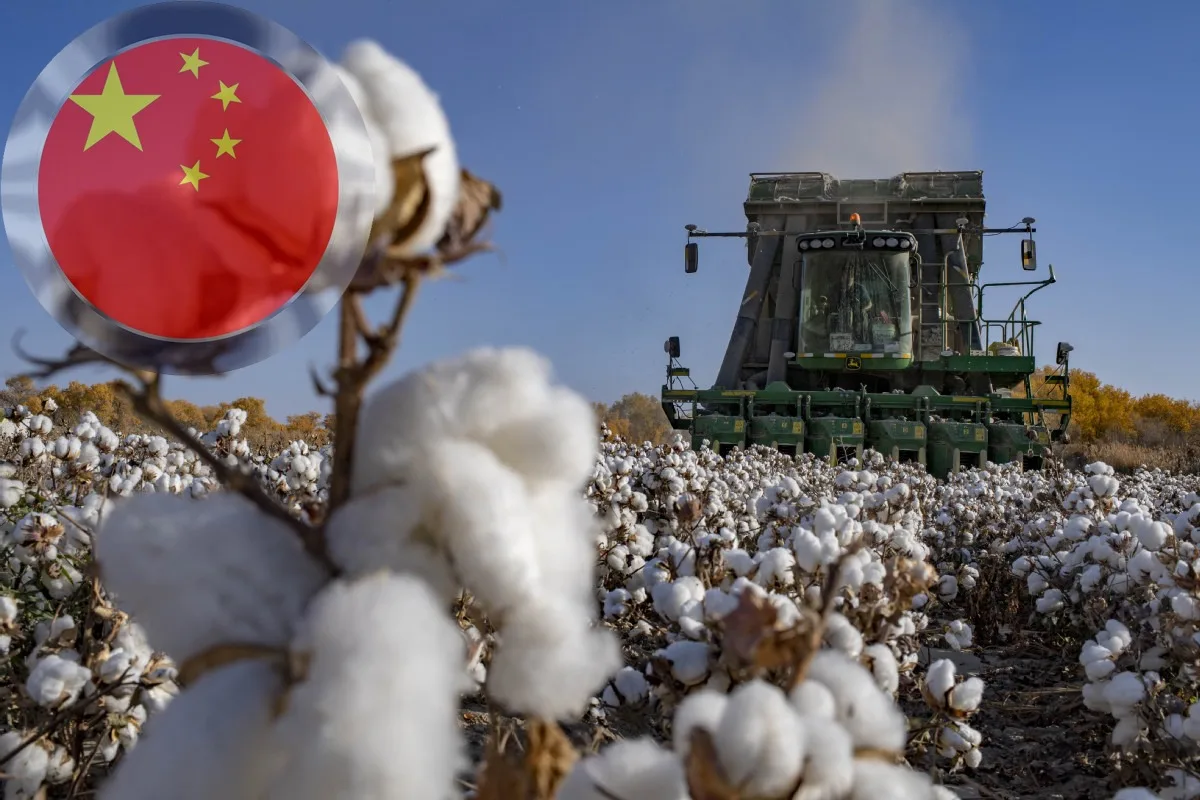Introduction
China’s position in advancing the worldwide cotton enterprise is not anything quick or transformative, marked by the aid of centuries of innovation, cultivation, and technological expertise. As one of the globe’s biggest manufacturers and purchasers of cotton, China’s effect extends from the fields wherein cotton is grown to the factories wherein it’s far processed into textiles that beautify the cabinets of shops worldwide.
The records of China’s involvement with the cotton enterprise date lower back to historical times, with the cultivation of cotton documented as a ways lower back as 5,000 years ago. The country’s wealthy agricultural historical past supplied a fertile floor for the cultivation of this flexible crop, which quickly became necessary to China’s economic system and culture.
Throughout records, China’s cotton enterprise has gone through awesome advancements, pushed with the aid of using a mixture of conventional farming techniques and cutting-edge technological improvements. The country’s cotton farmers have tailored to converting environmental conditions, and growing sustainable practices to maximize yield and quality. China’s cotton manufacturing has now no longer met the needs of its big home marketplace however has additionally performed an essential position in shaping the worldwide cotton trade.
The country’s strategic investments in studies and development, coupled with its attention to enhancing crop yields and quality, have located China as a pacesetter inside the cotton enterprise. Moreover, China’s fabric production sector, powered by the aid of its plentiful cotton resources, has propelled the country to the leading edge of fabric manufacturing globally. From spinning turbines to garment factories, China’s fabric enterprise has set the same old for performance and quality, imparting the arena with an enormous array of cotton-primarily based total products. In recent years, China has persisted in spending money on sustainable cotton farming practices and revolutionary technology to similarly beautify the performance and environmental sustainability of its cotton enterprise. As the arena grapples with troubles of sustainability and accountable sourcing, China’s efforts in this regard are commendable and function as a version of the worldwide cotton enterprise.
In this article, we explore the multifaceted position that China performs in advancing the cotton enterprise. From its historical roots in cotton cultivation to its cutting-edge-day improvements in fabric production, China’s effect on the worldwide cotton marketplace is profound and ways-reaching. We discover the important thing elements riding China’s fulfillment within side the cotton enterprise, the demanding situations it faces, and the techniques it employs to keep its role as a powerhouse within side the global cotton.
Historical Context
China’s history of cotton development extends back centuries, with the trim getting to be a necessary portion of its rural scene. Conventional strategies of development and weaving were well-established in old China, laying the establishment for a prospering cotton industry. Be that as it may, it was amid the Melody Line (960–1279 CE) that cotton cultivating started to flourish on a bigger scale.
Amid the Melody Line, progressions in agrarian procedures, water system frameworks, and arrival development hones permitted for expanded cotton generation. The southern districts of China, with their favorable climate and rich soil, got to be center points for cotton development. The cotton plant, with its cushy white strands, was developed broadly, giving crude fabric for the generation of materials.
Chinese cotton materials rapidly picked up fame for their quality and craftsmanship. The complicated weaving procedures and complicated plans captivated markets along the Silk Street, getting to be prized commodities among dealers and vendors. Chinese cotton textures were not as they were worn locally but were moreover exchanged to far-off locales, exhibiting China’s early part as a worldwide center for material generation and exchange. The Silk Street, the antiquated exchange course that associated China with Europe, played a critical part in the spread of Chinese cotton materials.
Shippers traveled along this endless organize of exchange courses, carrying jolts of finely woven cotton textures to markets in Central Asia, the Center East, and Europe. These materials got to be exceedingly sought-after extravagance things, prized for their delicateness, strength, and perplexing designs. The ubiquity of Chinese cotton materials along the Silk Street had a significant effect on exchange and social trade. The request for these textures impelled financial development and thriving within the districts where cotton was developed. It too cultivated social trades, as the materials got to be images of riches and status, affecting design and aesthetic expression in removed lands. The bequest of China’s cotton development amid the Melody Line proceeds to resound nowadays. It laid the foundation for China’s persevering part as a major player in the worldwide cotton industry. The country’s rich history of cotton cultivation and material generation could be a confirmation of its resourcefulness, craftsmanship, and social impact on a worldwide scale.
China’s part in the cutting-edge cotton industry is nothing brief of transformative, with a history of headways in generation, development, and mechanical development. As one of the biggest cotton makers all-inclusive, nearby India and the Joined together States, China’s tremendous agrarian zones, especially in Xinjiang, have played a significant part in providing the world with a noteworthy parcel of its cotton.
China’s effect on the present-day cotton industry is transformative, characterized by a history of spearheading headways in generation, development, and innovative development. As one of the world’s biggest cotton makers, China stands near India and the Joined together States in providing a considerable parcel of the worldwide cotton request.
Generation and Development
China’s notoriety as a driving cotton maker is solidly set up. The locale of Xinjiang, with its perfect climate and rich soil, has developed as a key player in China’s cotton yield. This bone-dry however beneficial locale essentially contributes to China’s general cotton generation. Chinese agrarian specialists and researchers have been instrumental in creating high-yielding and disease-resistant cotton assortments. These headways not as it were support efficiency but moreover advance maintainability in cotton cultivating hones. A fabulous case is the creation of Xinluzao 45, a cross-breed cotton assortment prized for its remarkable abdicate and resistance to bugs. Grasping mechanization has revolutionized China’s cotton-cultivating hones. Cutting-edge hardware such as cotton pickers and collectors has gotten to be far-reaching, coming about in expanded proficiency and diminished labor costs. This move towards mechanization has not as it were changed the scene of cotton cultivating but has also made it more feasible and competitive all-inclusive.
Innovative Advancements
China has been at the cutting edge of cotton biotechnology, especially in the improvement of hereditarily adjusted (GM) cotton assortments. Bt cotton, a GM strain built for bug resistance, has picked up far-reaching appropriation in China. This development not as it were boosts yields but moreover minimizes the requirement for chemical pesticides, advancing ecologically neighborly rural hones.
Critical speculations in inquiries about and improvement by Chinese educate and companies have moved progressions in cotton breeding, bug control techniques, and fiber quality upgrades. For occurrence, the China Cotton Inquire about the Institute’s work on creating drought-tolerant cotton assortments exhibits China’s commitment to economical cotton cultivating.
China’s material industry stands as the biggest all-inclusive, with cotton playing a significant part in this division. A significant parcel of China’s cotton generation is channeled into household material fabricating, giving a wide extend of items for both nearby utilization and worldwide send-out.
Material plants have experienced noteworthy modernization in later a long time. The integration of progressed apparatus for turning, weaving, and wrapping up cotton materials has immensely moved forward in effectiveness and item quality. For occurrence, driving material companies like Huafu Mold have contributed to state-of-the-art turning gear to reinforce generation capabilities.
China’s position as a major cotton maker and customer manages its noteworthy impact on worldwide cotton costs and exchange flow. Changes in China’s cotton approaches and purported designs resound all through the industry, affecting material producers around the world. A lessening in China’s cotton imports, for case, seems to lead to a surge in worldwide cotton costs.
China’s yearning Belt and Street Activity (BRI) holds suggestions for the cotton industry. The activity incorporates ventures pointed at upgrading exchange and framework along the notable Silk Street courses, encouraging the consistent development of products, counting cotton, over borders. This activity not as it were opens up modern roads for cotton exchange but also sets China’s position as an imperative player in worldwide exchange systems.
With a developing worldwide center on maintainability, China has effectively sought after feasible cotton cultivating hones. Activities such as water preservation measures, diminished pesticide utilization, and the advancement of natural cotton generation emphasize China’s commitment to ecologically inviting agribusiness. Outstandingly, the Way Better Cotton Activity (BCI) has picked up footing in China, advancing economic hones among cotton ranchers.
The cotton industry in China, like numerous others, has confronted examination over labor hones. Endeavors are underway to improve working conditions and guarantee reasonable compensation for cotton agriculturists and material specialists. Activities such as the Xinjiang Cotton Sourcing Program are adapted towards advancing mindful sourcing hones and maintaining labor guidelines within the locale.
Conclusion
In conclusion, China`s contribution to the advancement of the cotton industry is a story of innovation, sustainability, and global influence. As one of the world’s largest cotton producers, China has leveraged its vast agricultural resources and technological prowess to revolutionize cotton farming practices. The development of high-yielding and disease-resistant cotton varieties, such as Xinluzao 45, showcases China’s commitment to enhancing productivity while promoting sustainability.
Embracing mechanization has not only increased efficiency but also reduced labor costs, making cotton farming in China more competitive on the global stage. The integration of biotechnology, particularly with the widespread adoption of genetically modified Bt cotton, has further boosted yields and minimized environmental impacts. China’s textile industry, the largest in the world, heavily relies on its domestic cotton production, highlighting the pivotal role cotton plays in the country’s economic landscape. Through significant modernization efforts in textile mills and advancements in spinning and weaving technologies, China continues to set standards for product quality and efficiency. In the global cotton market, China’s influence is undeniable.
Fluctuations in China’s cotton policies and trade patterns can have far-reaching effects on global cotton prices and trade dynamics. Moreover, initiatives such as the Belt and Road Initiative (BRI) open up new avenues for cotton trade, solidifying China’s position as a key player in international trade networks. As China continues to prioritize sustainability in cotton farming and improve labor practices, it sets a precedent for responsible industry practices. The Better Cotton Initiative (BCI) and the Xinjiang Cotton Sourcing Program demonstrate China’s commitment to promoting sustainable and ethical cotton production. In essence, China’s role in advancing the cotton industry is multifaceted and impactful.
From pioneering technological innovations to shaping global trade dynamics, China’s contributions continue to shape the industry’s future. As the world looks towards a more sustainable and efficient cotton sector, China stands at the forefront, embodying a legacy of progress and responsible stewardship in the cotton industry.

Ms. Syeda Manal Tirmizi Research Associate at Pakistan Research Center for a Community with Shared Future ( PRCCSF).


